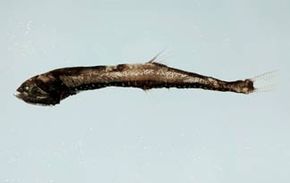Quck answer
Fish are one of the most diverse and fascinating creatures on the planet. Here are five little known facts about them:
1. Fish can communicate with each other through sound. Some species use grunts, pops, and even knocks to send messages to their fellow fish.
2. Some fish can live for more than 100 years. The oldest known fish is a Greenland shark that is estimated to be more than 400 years old!
3. Fish have a unique organ called the lateral line that allows them to sense vibrations and movements in the water, helping them navigate and locate prey.
4. Some fish, like the archerfish, can shoot water out of their mouths to knock insects off of overhanging branches, which they then eat.
5. Many fish species have the ability to change colors and patterns on their skin to blend in with their surroundings or attract a mate. Some can even produce light, called bioluminescence, to attract prey or communicate with other fish.
Animal Facts

Fish are aquatic animals with gills, a backbone, fins, and a two-chambered heart. While some people may not be interested in learning more about them beyond this, for others, fish are endlessly fascinating creatures. From their unique abilities to their various sizes and habitats, there is always more to discover about these water-dwelling animals. Here are five little-known facts about fish that may surprise you.
5: The World’s Most Common Fish is Not What You’d Expect

The bristlemouth is the most common type of fish on the planet, but it’s one that humans rarely see. These small and camouflaged creatures live between 100 and 250 fathoms down in the ocean and are part of the Cyclothone genus. Despite their unimposing size, they have a unique defense mechanism: two rows of light-emitting organs on their underside that prevent them from casting a shadow that predators could spot.
4: The Whale Shark is the World’s Largest Fish

The whale shark, which can grow to over 65 feet and weigh nearly 40 tons, is the biggest fish in the world. Despite its size and intimidating appearance, it’s a filter feeder and mostly harmless to humans. These gentle giants have been known to allow swimmers to hitch rides on their backs. They live up to 70 years unless they’re hunted by humans for their meat.
3: The World’s Smallest Fish is Male

While the title of world’s smallest fish is up for debate, one contender is the stout infantfish (Schlindleria brevipinguis), which is only 7.0 millimeters long. Another contender is the Paedocypris fish, which is 7.8 millimeters long and lives in Sumatran swamps. Interestingly, the male anglerfish is also considered one of the smallest fish, as they can be less than half an inch in length.
Other interesting fish facts include the fact that they can taste without opening their mouths, sleep with their eyes open, and float without casting a shadow. From the tiniest fish to the biggest, fish are truly fascinating creatures worth learning more about.
The male anglerfish, known as Photocorynus spiniceps, is the smallest fish discovered in the Philippines, measuring only 6.2 centimeters from snout to tail. Despite its size, this tiny fish is a parasite that attaches itself to a larger female. The female is responsible for all the work, including swimming and eating, while the male just hangs on.
Fish have an exceptional sense of taste and smell, which they rely on to perceive their environment. Unlike humans, fish don’t have 3-D vision due to their eyes being on opposite sides of their heads. However, they make up for this by having extremely acute senses of smell and taste. Some fish use smell to locate a safe place to lay their eggs, while others can recognize the odor of their home stream. Sharks, rays, eels, and salmon have such finely-tuned olfactory rosettes that they can detect scents at one part per billion in the surrounding water. Fish are also capable of tasting food before it enters their mouths, with many species having taste buds on their tongues, fins, face, and tail area. Catfish have the most sophisticated palates of all, with taste buds covering their entire body, including their whiskers.
While most fish have an anatomical design that allows them to move forward by flexing their bodies and using their tail fins, some species can also swim backwards. Triggerfish, for example, use a method called balistiform mode, which involves undulating their dorsal and anal fins to move both forward and backward through the water. The electric eel uses a similar method of locomotion called gymnotiform mode, which involves undulating its lengthy body and flapping its anal fins.
FAQ
1. What is the oldest fish species?
The oldest known fish species is the coelacanth, which has remained virtually unchanged for more than 400 million years. Once thought to be extinct, living coelacanths were discovered in 1938 off the coast of South Africa.
2. Can fish see in color?
Yes, many fish can see in color. Some species have even evolved the ability to see ultraviolet light, which is invisible to humans.
3. How do fish breathe?
Fish breathe through their gills, which extract oxygen from the water. As water flows over their gills, oxygen is absorbed into their bloodstream and carbon dioxide is released.
4. Do fish have teeth?
Yes, many fish have teeth. However, the types of teeth can vary greatly between species. Some fish have sharp, pointed teeth for hunting prey, while others have more rounded teeth for grinding up plant matter.
5. How long can fish live?
The lifespan of a fish can vary greatly between species. Some fish, such as goldfish, can live for more than 20 years in captivity, while others may only live for a few years in the wild.
6. Are all fish cold-blooded?
Yes, all fish are cold-blooded, meaning their body temperature is the same as their surroundings. This is why fish are often more active in warmer water.
7. How do fish communicate?
Fish communicate in a variety of ways, including visual cues, sounds, and chemical signals. Some fish, such as anglerfish, even have bioluminescent organs that they use to attract prey.
8. Can fish feel pain?
The question of whether fish can feel pain is a controversial one. While fish do have nociceptors (pain receptors), it is unclear whether they experience pain in the same way that humans do.
9. What is the largest fish in the world?
The largest fish in the world is the whale shark, which can grow up to 40 feet long and weigh more than 20 tons. Despite their size, whale sharks are filter feeders, feeding on plankton and small fish.
10. How do fish navigate?
Many fish use a combination of senses to navigate, including their sense of smell, vision, and the ability to sense changes in the Earth’s magnetic field. Some species, such as salmon, are also able to use their sense of smell to navigate back to the same spawning grounds year after year.
11. Do fish sleep?
Yes, fish do sleep, although their sleep patterns can vary greatly between species. Some fish are able to sleep with just one half of their brain at a time, allowing them to remain alert to potential predators while still getting the rest they need.





Leave a Reply